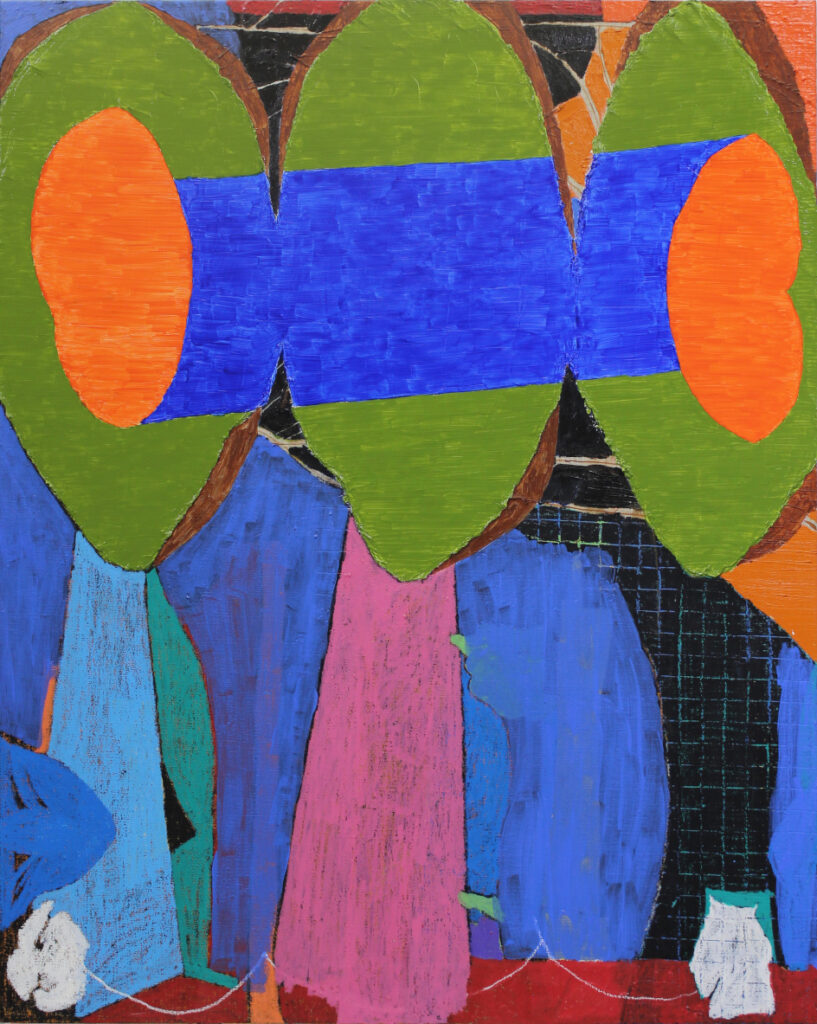
この度、ASK + POST 所属作家の中屋敷智生は、11月23日(土) から12月14日(土) までの期間、“YIRI ARTS”(台北, 台湾)にて、中屋敷智生個展「内と肉」を開催いたします。
https://nakayashiki.wixsite.com/tomonari
中屋敷 智生 個展
「内と肉 | 內與肉 | Inner Flesh」
会 場:YIRI ARTS 伊日藝術計劃 B1
会 期:2024年11月23日(土) – 12月14日(土)
休廊日:日曜日、月曜日
時 間:14:00-19:00
場 所:台北市内湖区新明路 86 巷1号 114030
M a i l :gallery@ms.yiri.com.tw
W E B :https://yiriarts.com.tw/
Works:https://privateviews.artlogic.net/2/16e5c16a0c4a84d4f05ff2/
主 催:YIRI ARTS
レセプション:11月23日(土) 15:00-19:00
■ ギャラリー・インビテーション:YIRI ARTS
中屋敷 智生 | NAKAYASHIKI Tomonari
1977年大阪府生まれ、京都市在住。2000年に京都精華大学美術学部造形学科洋画分野を卒業して以来、国内外の展覧会やアートフェアに多数参加してきました。また、作家活動の傍ら、アーティスト・ラン・オルタナティブ・スペースの運営や、グループショーなどの企画も手がけています。
近年は、絵具と同じ画材・メディウムとしてマスキングテープを使用しており、コラージュのようなレイヤーとテクスチャーを持つ絵画作品を数多く発表しています。図と地の関係が常に入れ替わるようなこの手法によって、対象を視覚的に認識することの不確かさや、絵画と鑑賞者という伝統的な二元論を超えた絵画作品のあり方を探求しています。この機会にご高覧いただけますと幸いです。
■ 内と肉:中屋敷智生
ある日の散歩道で、「内と肉という字は似ているなあ」とぼんやり考えていました。そこで、わたしは「内と肉」の関係について考察を深めてみることにしました。
「内」と「肉」という字は、形状が似ているだけでなく、意味の面でも共通点があるように思えます。それは、両者のベクトルがいずれも内側へ向いているという点です。しかし、内側へのベクトルがそれ単体で成立することはなく、対照となる外側の存在が必ず前提されています。内と外は互いに依存し、対立することで共存するのです。
この視点を、わたしは西田幾多郎の「場所」という哲学的概念から学びました。「場所」とはすべての存在が現れる基盤であり、主体と客体、内と外、肉体と精神といったあらゆる対立を超えた場です。「場所」は対立を許さず、すべてが一体となる土台であるため、ここでは内と外が融合しているのだと考えられます。
絵画に向けるまなざしも同様に、内と外を同時に含み持っています。そのまなざしは、一見すると自分の外側にある客体としての絵画へ向けられているかのように思えますが、実は主客を超えて存在するものです。絵画とは、こうした純粋なまなざしを可能にする「場所」なのであり、わたしの絵画もまた、このようなまなざしが漂う場であって欲しいと願っています。
—————————————————————————————–
■ About 中屋敷 智生
1977年出生於大阪府,目前居住於京都市。2000年畢業於京都精華大學美術學部造形學科西畫領域,自此以來積極參與國內外的展覽與藝術博覽會。此外,在藝術創作之餘,也參與經營藝術家自主運營的替代空間,並策劃團體展覽等活動。
近年來,藝術家運用與繪畫顏料同樣作為媒材的美術膠帶,創作出大量具有拼貼效果的分層與質感的繪畫作品。透過這種手法,圖與底的關係不斷相互交替,探討了對對象視覺認知的不確定性,以及超越傳統繪畫與觀賞者之間二元對立的新表現方式。
■ 內與肉:中屋敷 智生
有一天散步時,我漫不經心地想到:「內與肉這兩個字真是相似啊。」於是,我決定深入思考「內與肉」之間的關係。
「內」與「肉」這兩個字,不僅在字形上相似,在意義層面似乎也有共通之處。這共通點在於,兩者的向量都指向內部。然而,指向內部的向量並非單獨成立,外部的存在必然是其前提條件。內與外彼此依存,透過對立而共存。
這一觀點,我是從西田幾多郎的哲學概念「場所」中學到的。「場所」是所有存在顯現的基礎,是超越主體與客體、內與外、肉體與精神等一切對立的場域。由於「場所」不允許對立,而是一切融合為一的根基,因此可以認為在這裡內與外是融為一體的。
對於繪畫的凝視也是如此,它同時包含內與外的元素。這凝視表面上似乎是指向作為客體的繪畫——即自身之外的事物,但事實上它是超越主客對立而存在的東西。繪畫是使這樣純粹凝視成為可能的「場所」,而我的繪畫同樣希望成為這樣一個凝視流動的場域。
—————————————————————————————–
■ About NAKAYASHIKI Tomonari
Born in Osaka Prefecture in 1977 and currently residing in Kyoto City, I graduated from the Kyoto Seika University School of Fine Arts, majoring in Western Painting, in 2000. Since then, I have participated in numerous exhibitions and art fairs both domestically and internationally. Alongside my artistic activities, I also manage an artist-run alternative space and organize group shows.
In recent years, I have been using washi tape as a medium, just like paint, resulting in a series of paintings that feature layers and textures reminiscent of collage. Through this technique, where the relationship between figure and ground constantly shifts, I explore the uncertainties of visual perception and seek to transcend the traditional dichotomy of painting and viewer. I would be grateful for the opportunity for you to take a look at my work.
■ Inner Flesh:NAKAYASHIKI Tomonari
One day, while out for a walk, a thought casually crossed my mind: “The characters for ‘inner’ (內) and ‘flesh’ (肉) are strikingly similar.” This sparked my curiosity to delve deeper into the connection between these two words.
The characters for “inner” and “flesh” are not only visually alike but seem to share a conceptual similarity as well: both point inward. However, this inward orientation cannot exist in isolation; the presence of an external counterpart is a necessary precondition. The inner and the outer are interdependent, coexisting through their opposition.
This perspective draws from the philosophical concept of “place” (場所) introduced by Nishida Kitaro. “Place” serves as the foundation for all existence to manifest, transcending dichotomies such as subject and object, inner and outer, body and spirit. In this context, “place” dissolves opposition, functioning as the root where all becomes one. Thus, within this framework, the inner and outer are unified.
The act of gazing at a painting operates similarly, encompassing both inner and outer elements. At first glance, this gaze seems directed outward, toward the painting as an object—something external. Yet, in truth, it transcends the dichotomy of subject and object. Painting creates the “place” where this pure gaze becomes possible, and I aspire for my works to embody such a space where the flow of gazes converges and intertwines.

